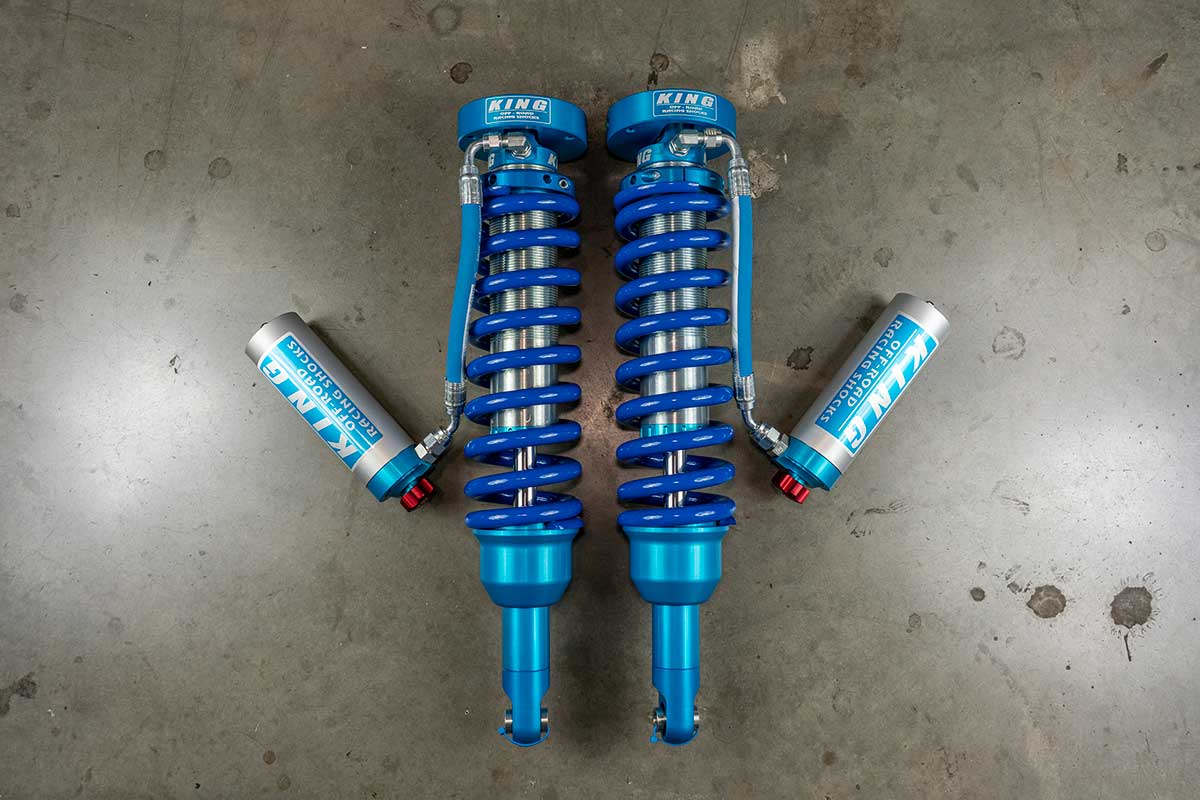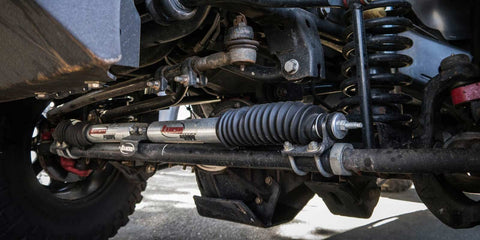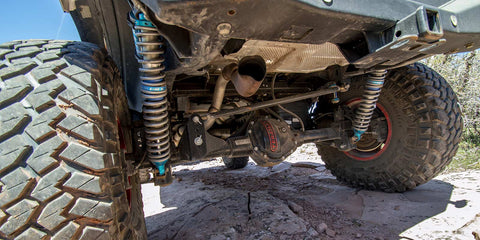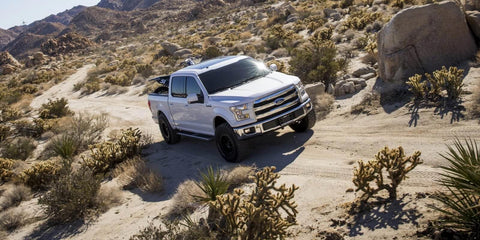King Off-Road Shocks FAQ
Posted by Sean Reyes on
King Shocks are one of the most coveted brands in the offroad and consumer space for suspension options. There's myths and truths around King Shocks performance, comfort, and what kind of driver a 2.5 or 3.0 King Shock is good for. We dive into some common questions around King Shocks on various applications down below.
Q. From fox 2.0 shocks to the 2.5 King pintop kit and seems like the ride quality isn’t any better than the foxes maybe even slightly rougher while on road. Do the King shocks have a break in period or do I need to do anything because there new?
All shocks do have a short break in period before they loosen up, however we would be lying if we told you the Kings 2.5s are not a little firmer on the road in comparison. The Fox 2.0 is really tuned for added comfort and control for daily drivers and more conservative off road driving, whilec the King 2.5s are typically tuned more for people who might charge a little harder off road.
Put it simply, out of the box they are tuned to give you maximum control, so comfort on your commute can suffer slightly. If you are chasing a plush ride on the road, we recommend springing for the adjustable model if available for your application. Simply soften them up on the road or when you want maximum comfort and dial them firmer when it is time to party in the dirt.
Are King Shocks better than Fox?
In short no, but they may be better for you. King offers a massive degree of customization, that most other brands can’t do as easily. If you need something in a custom length, tune, or even color - then King is the way to go.
Fox does have a better adjusters (DSC) and uses some better components in certain places (stronger shafts), and Fox’s lead times are usually quicker on OE-replacement parts due to their enormous manufacturing operation.
How much lift do King 2.5 shocks give?
In terms of OE-replacement coilovers (Tacoma, F150), it is application specific. However most standard travel coilovers in the OEM performance line do a maximum of 1-2.5” of lift while their extended travel coilovers that require aftermarket upper control arms typically do 2.5-3.5” of lift or more.
Non-coilover shocks (Jeep, Ram, etc) do not provide any lift to the vehicle, ride height is controlled by the coil springs or leaf springs on the vehicle.
How long do King shocks last? How often should I rebuild?
As with everything it really depends on your specific use. Racers rebuild their shocks every 1,000-5000 miles, but street / daily drivers can go as long as 50,000 miles. If you are more like the rest of us who spend a little time on and off road you can expect to do rebuilds every 10,000 to 30,000 miles depending on how often and aggressive you are driving on the trail.
Key signs to know when its time to rebuild; abnormal shock oil showing up on the shock body, getting more squishy in the front or rear suspension, more body roll than you remember.
Are King Shocks aluminum?
King shocks bodies are made of steel however they often use aluminum in some of their components. King also uses aluminum reservoirs in combination with steel main bodies.
How do you adjust King Shocks on the truck?
If you’re talking about coilover adjustment, you will need a spanner wrench first off. If you’re looking to preload the springs further than its advised to either get a compact coil spring compressor to lighten the tension, or compress the suspension enough to relieve tension on the spring before making adjustment.
Unloading the spring will be easier while the coilovers are on the vehicle since you are not fighting coil spring compression.
King’s compression adjuster comes with 16 total clicks of total adjustment with the first 4 clicks largely only altering low speed compression. The remaining 12 clicks will control mid speed compression, effecting both body roll, dive, and articulation as well as bump stiffness. To start, on most vehicles, we recommend turning the dial counter clockwise until you have reached full soft, then turning the knob 4 clicks in the opposite direction to set your base. From there you can continue to turn it counter clockwise if you feel you need more control or clockwise if you would like the suspension to move more freely.
Are King Shocks adjustable?
Mid-Speed compression knobs are optional on most 2.5” body or larger shocks and coilovers with external reservoirs in the OEM performance line as well as 2.0” body and larger external reservoir coilovers and shocks in their Performance Race and Pure Race lines. External bypass shocks use traditional wrench style adjusters on the tubes.
How much nitrogen PSI for my King Shocks?
In most cases we recommend between 150-200 PSI, however applications with stiffer valving may require more Nitrogen to combat cavitation, while some applications with very light valving can sometimes benefit from a little less.
How much is it to rebuild King Shocks?
Shock Labor rates vary depending on location and shop, typically in the $125-200 / shock range. Large UTV shocks will cost more, single body shocks with no reservoir will cost less. Typical 2.5 shocks with reservoirs usually runs between $600-800 for a rebuild.
How do you revalve and retune King Shocks?
To start your “valving” or how the shock is tuned is determined by how much oil can flow through the piston in each direction. To control that flow, a carefully ordered stack of shims with a measured amount of deflection are used. Simply put, more flow through the piston means less valving or a “softer” tune, and less flow through the piston equates to more valving or a “stiffer” tune. If you want to change your valving or retune your shocks, you simply change the position, size, and thickness of the shims to better suit your needs.











